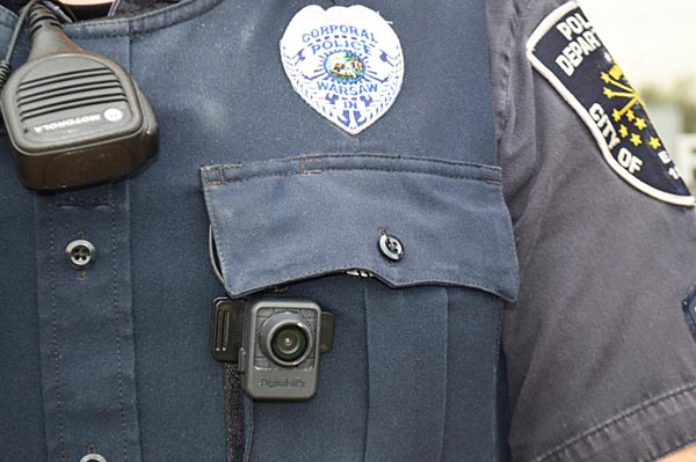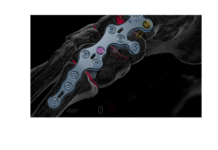Less than two months after the Syracuse Police Department began the full implementation of vest cameras, police captured footage in a double murder case that the prosecutor would call the “pinnacle to the case.”
Syracuse officer Joe Denton’s vest cam captured footage of Tara Thornburg, just after she had been shot on Feb. 19, 2015, identifying Brandon Woody as the man who shot her and her boyfriend, Joshua Knisley. She died the next day.
Kosciusko County Prosecutor Dan Hampton played the footage in court, helping a jury convict Woody and his accomplice, Kyle Dehart, of two counts of murder.
“Any time you have video, it’s important,” said Jim Layne, Chief of Police at Syracuse Police Department. The Woody case proved Syracuse police made a good decision to invest in the technology, Layne said.
Five out of nine area police departments contacted by the Times-Union have embraced the technology that officials say can benefit both police and the public.
Police departments in Warsaw, Winona Lake, Silver Lake, Syracuse and South Whitley use vest cameras. Police departments in North Webster, Milford and Nappanee don’t currently use vest cams.
“Our officers want the cameras,” said Capt. Joel Beam, who oversees Warsaw Police Department’s patrol division. He said Warsaw has used the cameras for about five years.
Beam said cameras can be useful in dealing with complaints against officers or the footage can be used as a training tool.
Warsaw officers are required to turn on their cameras anytime they go to a scene with possible criminal activity, Beam said.
Mikel VanDevender, town marshal for South Whitley, said body cams have cut down on complaints against officers. When a resident comes to complain about an officer, VanDevender said he offers the resident a chance to sit down and watch the camera footage with him. “Most times they turn around and walk out before viewing the recording,” he said.
Kosciusko County Sheriff’s Department – the largest department – hasn’t implemented a body cam program. Sheriff Aaron Rovenstine said the department has been doing a test run with a few cameras.
Even though they began looking into the cameras before the Woody case, he said the trial really opened his eyes as to how effective cameras can be. “It would of been a difficult case without (the footage),” Rovenstine said.
Rovenstine said he wanted to wait to test out the vest cams until the Indiana General Assembly approved laws governing public access of the footage. In 2015, the legislature did that, making footage available to the public with restrictions. “I was happy with what the legislature did,” Rovenstine said.
Still, the cameras remain in a test phase and KCSD has made no decision on whether to fully implement a vest cam policy, said Sgt. Chad Hill, Public Information Officer for KCSD.
Concerns about public access was one reason North Webster Deputy Town Marshal Candace Smyth said the department hasn’t implemented a system yet.
For some of the smaller departments, cost remains a major stumbling block. “Based on the information we’ve received, cameras are cost-prohibitive for us,” said Thomas Marsh, an officer with the Milford Police Department.
Cost of the program can be hard to estimate due to variances in department procedures. Beam said it was hard to estimate the cost since it’s lumped in with in–vehicle cameras, but the biggest cost of the program is the storage of video.
Indiana law requires departments keep footage on file for 190 days. Many departments have a policy that keep them longer. Storing footage for as many as 30 patrol officers can get expensive. Some of the smaller departments use grants to fund cameras.
Silver Lake Town Marshal Craig Hollopeter said without grant money, his department would not be able to afford the cameras. He said he would continue to push for grants because he believes the benefits are so great.
“The money is out there if a law enforcement agency really wants to create a body cam policy,” said Joe Hawn, Winona Lake Town Marshal.
Police departments in Claypool, Akron, Mentone, Bourbon and North Manchester did not return calls seeking comment on the subject.





